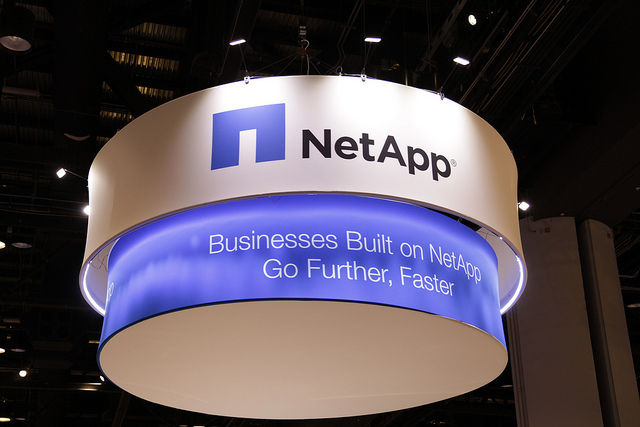 INFRA
INFRA
 INFRA
INFRA
 INFRA
INFRA
Continuing its diversification strategy beyond its storage legacy, NetApp Inc. today announced the availability of its NetApp Cloud Data Services on the hyperconverged appliance it introduced two years ago.
The company said it’s also expanding the capabilities of its cloud management platform to enable customers to stretch persistent storage across public clouds and better control the way they manage and pay for cloud services. Hyperconverged infrastructure, or HCI, refers to combining storage, computing and networking into a single system so they’re more efficient and can scale up faster.
The on-premises services are currently offered only on the company’s own HCI platform still has minimal market share, but availability is likely to expand, said Anthony Lye, general manager of cloud at the Sunnyvale, California-based company.
“Ultimately, we’re an open company,” he said. “The architectures we use for our HCI use standard virtual machines, so they’ll be available on any on-premises VM environment.” Widely used virtual machines such as those from VMware Inc. are computers emulated in software for greater efficiency and flexibility.
NetApp has been navigating a tortuous transition from building storage hardware to becoming a diversified data management vendor with cloud expertise. The company’s stock has been on a roller coaster ride recently, capped by a significant earnings disappointment in its fiscal fourth-quarter earnings announced last month.
But executives said the strategy is paying off and will return the company growth this year. “We have tens of customers paying us millions a year for our cloud services,” Lye said.
Cloud Data Services is a suite of tools customers can use to manage storage and data on public clouds as well as to conduct analytics that help them optimize usage and cost. NetApp has been building out the services since late 2016 and now runs them on public cloud platforms from Amazon Web Services Inc., Microsoft Corp. and Google LLC. With today’s announcement, the same services are now on Netapp HCI, “so your private cloud can run the same as on the public cloud,” Lye said.
The initial HCI implementation includes Kubernetes Service on NetApp HCI, a software suite that combines an automated Kubernetes deployment engine, application marketplace and application orchestration engine that customers can use to move workloads between on-premises appliances and the cloud. Kubernetes is an open-source software platform for managing containers, which are self-contained software environments that are portable across many platforms.
Also new in this initial release is Cloud Volumes, a managed service that supports both network file system and server message block storage at high scale and performance with data protection built in, the company said.
The Kubernetes services “enables you to deploy 100% [Cloud Native Computing Foundation]-compatible Kubernetes onto public clouds,” Lye said. The software provides cluster configuration and lifecycle management. “Once code is built and put into a repository we have all the tooling to scale, heal, test and run the application,” delivered as a service, Lye said.
NetApp’s Cloud Insights monitoring and optimization tool provides instrumentation for infrastructure monitoring ranging from the physical to the application level. It monitors metrics like response times, capacities, VM performance and the condition of the service mesh, Lye said. “You can see and manage all cloud instances and you are tied in to a full range of infrastructure and application services to let you see how they’re performing,” he said.
Integration with the Istio service mesh for managing microservices means users can federate clusters across environments for purposes like “canary testing,” in which code changes are pushed to a small number of live servers to assess readiness for live service.
“I can use Istio to set up a relationship between version one and version two, route traffic to the version two application and control the amount of traffic available to it,” Lye said. “I can then do that across multiple clouds.”
All software is delivered as a service. NetApp publishes pricing for most of its products on its website.
Support our mission to keep content open and free by engaging with theCUBE community. Join theCUBE’s Alumni Trust Network, where technology leaders connect, share intelligence and create opportunities.
Founded by tech visionaries John Furrier and Dave Vellante, SiliconANGLE Media has built a dynamic ecosystem of industry-leading digital media brands that reach 15+ million elite tech professionals. Our new proprietary theCUBE AI Video Cloud is breaking ground in audience interaction, leveraging theCUBEai.com neural network to help technology companies make data-driven decisions and stay at the forefront of industry conversations.